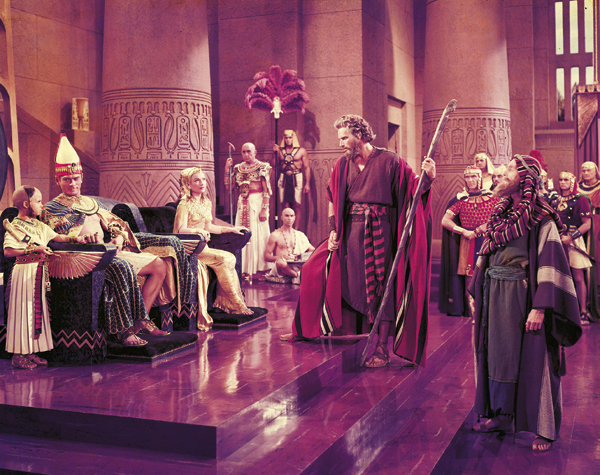Image Details

Museum of Modern Art
Once was not enough for film producer and director Cecil B. DeMille: He made two different films called The Ten Commandments, the first in 1923, the second and more famous one in 1956 (shown here). In the process, according to author Chattaway, DeMille defined the biblical movie epic and the way Moses would be represented in the movies.
Both films were products of their times. The prologue to the 1923 silent version told the story of Moses, while the rest of the film recounted the lives of two modern brothers, gauging the effects modern secularism, fundamentalism and the Ten Commandments had on their lives. Though DeMille expressed doubts about fundamentalism in the film (“You’re holding a Cross in your hand, Mom—but you’re using it like a whip!” the good brother says), he also offered a stern critique of modernity: “The Ten Commandments… are the fundamental principles without which mankind cannot live together.”
By 1956, when DeMille cast Charlton Heston as Moses in The Ten Commandments, his concern had shifted from secularism to Communism. In the prologue he says that the theme of the Exodus story—and of his film—is whether men are property of the state or of God. In DeMille’s screenplay, God compels the Israelites to spread the concept of liberty throughout Canaan—a message that bore a strong resemblance to American political ideals, Chattaway says.
